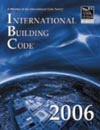717.2.1 Fireblocking materials. Fireblocking shall consist
of 2-inch (51 mm) nominal lumber or two thicknesses of 1-inch
(25 mm) nominal lumber with broken lap joints or one thickness
of 0.7I9-inch (18.3 mm) wood structural panel with joints
backed by 0.7I9-inch (18.3 mm) wood structural panel or
one thickness of 0.75-inch (19 mm) particleboard with joints
backed by 0.75-inch (19 mm) particleboard. Gypsum board,
cement fiber board, batts or blankets of mineral wool, glass
fiber or other approved materials installed in such a manner
as to be securely retained in place shall be permitted as
an acceptable fireblock. Batts or blankets of mineral or
glass fiber or other approved nonrigid materials shall be
permitted for compliance with the lO-foot (3048 mm) horizontal
fireblocking in walls constructed using parallel rows of
studs or staggered studs. Loose-fill insulation material
shall not be used as a fireblock unless specifically tested
in the form and manner intended for use to demonstrate its
ability to remain in place and to retard the spread of fire
and hot gases. The integrity of fireblocks shall be maintained.
717.2.1.1
Double stud walls. Batts or blankets of mineral or
glass fiber or other approved nonrigid materials shall
be allowed as fireblocking in walls constructed using
parallel rows of studs or staggered studs.
717.2.2 Concealed wall spaces. Fireblocking shall be
provided in concealed spaces of stud walls and partitions,
including furred spaces, and parallel rows of studs or staggered
studs, as follows:
1.Vertically at the ceiling
and floor levels.
2. Horizontally at intervals
not exceeding 10 feet (3048 mm).
717.2.3
Connections between horizontal and vertical spaces.
Fireblocking shall be provided at interconnections between
concealed vertical stud wall or partition spaces and concealed
horizontal spaces created by an assembly of floor joists
or trusses, and between concealed vertical and horizontal
spaces such as occur at soffits, drop ceilings, cove ceilings
and similar locations.
717.2.4
Stairways. Fireblocking shall be provided in concealed
spaces between stair stringers at the top and bottom of
the run. Enclosed spaces under stairs shall also comply
with Section 1009.5.3.
717.2.5
Ceiling and floor openings. Where annular space protection
is provided in accordance with Exception 6 of Section
707.2, Exception 1 of Section
712.4.1.2, or Section 712.4.2,
fireblocking shall be installed at openings around vents,
pipes, ducts, chimneys and fireplaces at ceiling and floor
levels, with an approved material to resist the free passage
of flame and the products of combustion. Factory-built chimneys
and fireplaces shall be fireblocked in accordance with UL
103 and UL 127.
717.2.6
Architectural trim. Fireblocking shall be installed
within concealed spaces of exterior wall finish and other
exterior architectural elements where permitted to be of
combustible construction as specified in Section
1406 or where erected with combustible frames, at maximum
intervals of 20 feet (6096 mm), so that there will be no
open space exceeding 100 square feet (9.3 m2).
Where wood furring strips are used, they shall be of approved
wood of natural decay resistance or preservative-treated
wood. If noncontinuous, such elements shall have closed
ends, with at least 4 inches (102 mm) of separation between
sections.
Exceptions:
1.
Fireblocking of cornices is not required in single-family
dwellings. Fireblocking of cornices of a two-family dwelling
is required only at the line of dwelling unit separation.
2. Fireblocking shall not be required where installed
on noncombustible framing and the face of the exterior
wall finish exposed to the concealed space is covered
by one of the following materials:
2.1. Aluminum having a minimum
thickness of 0.019 inch (0.5 mm).
2.2.
Corrosion-resistant steel having a base metal thickness
not less than 0.016 inch (0.4 mm) at any point.
2.3.
Other approved noncombustible materials.
717.2.7 Concealed sleeper spaces. Where wood sleepers
are used for laying wood flooring on masonry or concrete
fire-resistance-rated floors, the space between the floor
slab and the underside of the wood flooring shall be filled
with an approved material to resist the free passage of
flame and products of combustion or fireblocked in such
a manner that there will be no open spaces under the flooring
that will exceed 100 square feet (9.3 m2) in
area and such space shall be filled solidly under permanent
partitions so that there is no communication under the flooring
between adjoining rooms.
Exceptions:
1.Fireblocking is not required for slab-on-grade floors
in gymnasiums.
2.
Fireblocking is required only at the juncture of each
alternate lane and at the ends of each lane in a bowling
facility.

